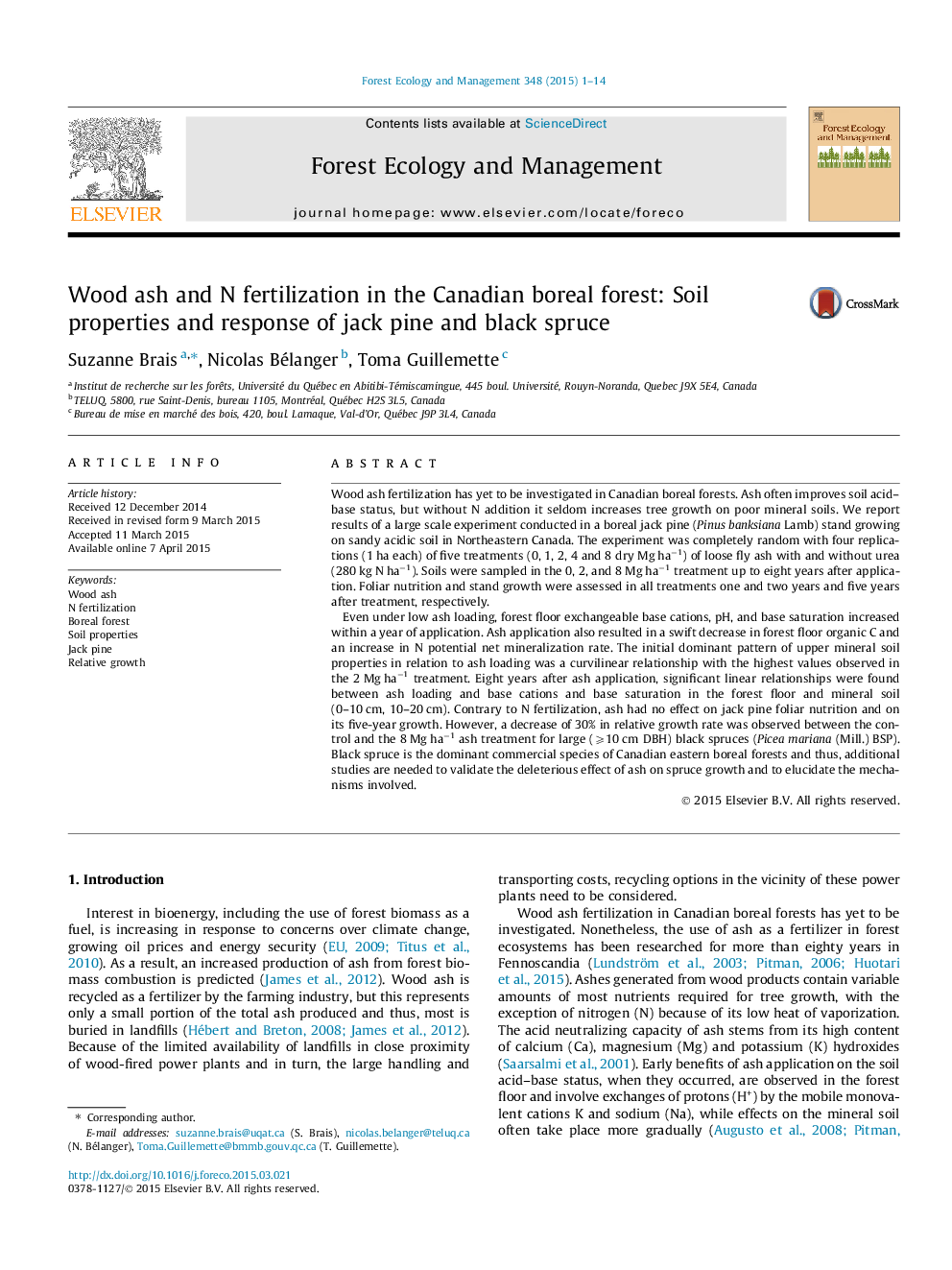| Article ID | Journal | Published Year | Pages | File Type |
|---|---|---|---|---|
| 6542737 | Forest Ecology and Management | 2015 | 14 Pages |
Abstract
Even under low ash loading, forest floor exchangeable base cations, pH, and base saturation increased within a year of application. Ash application also resulted in a swift decrease in forest floor organic C and an increase in N potential net mineralization rate. The initial dominant pattern of upper mineral soil properties in relation to ash loading was a curvilinear relationship with the highest values observed in the 2 Mg haâ1 treatment. Eight years after ash application, significant linear relationships were found between ash loading and base cations and base saturation in the forest floor and mineral soil (0-10 cm, 10-20 cm). Contrary to N fertilization, ash had no effect on jack pine foliar nutrition and on its five-year growth. However, a decrease of 30% in relative growth rate was observed between the control and the 8 Mg haâ1 ash treatment for large (⩾10 cm DBH) black spruces (Picea mariana (Mill.) BSP). Black spruce is the dominant commercial species of Canadian eastern boreal forests and thus, additional studies are needed to validate the deleterious effect of ash on spruce growth and to elucidate the mechanisms involved.
Related Topics
Life Sciences
Agricultural and Biological Sciences
Ecology, Evolution, Behavior and Systematics
Authors
Suzanne Brais, Nicolas Bélanger, Toma Guillemette,
